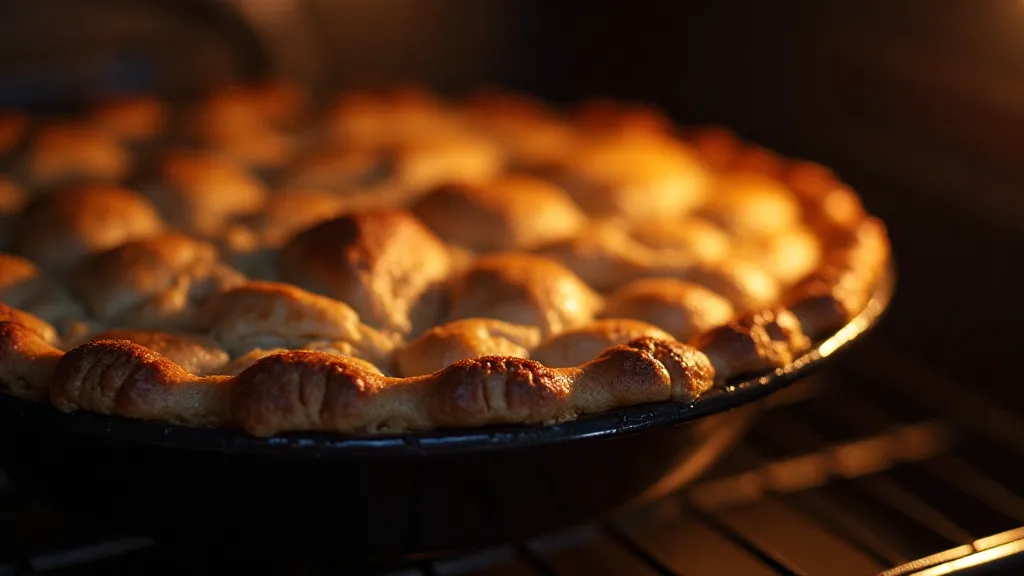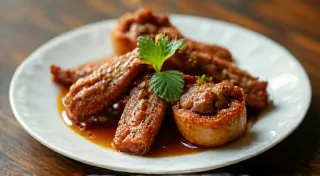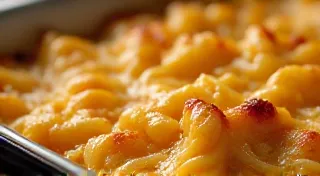Mock Apple Pie: A Depression-Era Dessert for Sweet Cravings
The Great Depression demanded resourcefulness. Families stretched every dollar and made do with whatever they had. This ingenuity extended to the kitchen, resulting in some surprisingly delicious and creative recipes. One such example is "Mock Apple Pie," a clever dessert born from scarcity and a longing for a classic favorite. When fresh apples were unavailable or simply too expensive, resourceful cooks crafted this clever substitute using pantry staples. Let’s step back in time and explore this fascinating piece of culinary history.

The Context: Dessert in a Time of Hardship
During the Depression, fresh fruit was a luxury many families couldn’t afford. Apples, in particular, were often out of reach. Yet, the desire for a sweet treat remained. Home economists and recipe writers worked tirelessly to develop alternatives using ingredients readily available in pantries – things like flour, sugar, spices, and even crackers. The need to make the most of limited ingredients impacted all areas of the kitchen, from simple meals to more elaborate desserts. Many families found themselves needing to stretch every ingredient, exploring creative ways to make a little go a long way. It wasn't just desserts; resourceful cooks also adapted main courses, sometimes using clever fillers to extend the meat supply. Dishes like Meatloaf, incorporating fillers like breadcrumbs or oatmeal, became staples during those lean years. Mock Apple Pie perfectly embodies this spirit of making the most of limited resources, demonstrating both frugality and a determination to maintain a sense of normalcy during difficult times.
The Recipe: A Symphony of Pantry Staples
The beauty of Mock Apple Pie lies in its simplicity and the remarkable flavor achieved with such humble ingredients. While variations existed, the core elements remained consistent. The limited resources meant that ingenuity and improvisation were essential. While a simple dessert like Mock Apple Pie brought a little sweetness, many families also relied on more substantial, budget-friendly meals for sustenance. Even quick and easy appetizers were precious commodities during those times. Consider the popularity of Deviled Eggs, a budget-friendly appetizer that could be made with readily available ingredients.
Ingredients (Typical for the Era)
- 1 ½ cups crushed crackers (often Ritz or similar)
- 1 cup sugar
- 1/4 cup melted butter
- 1 teaspoon cinnamon
- 1/4 teaspoon nutmeg
- 1/4 teaspoon cloves
- 1/2 cup milk
- 1 tablespoon lemon juice (or vinegar - a common substitute)
Instructions (Adapted from Historic Recipes)
- Preheat oven to 350°F (175°C).
- Combine crushed crackers, sugar, melted butter, cinnamon, nutmeg, and cloves in a bowl. Mix well.
- Add milk and lemon juice (or vinegar). Stir until combined. The mixture should resemble a slightly damp crumbly texture.
- Press half of the crumb mixture into the bottom of a greased pie plate.
- Carefully spread the mixture evenly.
- Top with the remaining crumb mixture.
- Bake for 30-40 minutes, or until the crust is golden brown.
- Let cool slightly before serving. A dollop of whipped cream (if available!) adds a touch of extra indulgence.

Beyond the Recipe: A Story of Resilience
Mock Apple Pie isn't just a dessert; it's a symbol of resilience, adaptability, and the enduring human spirit. It showcases how even in times of hardship, families found ways to nourish themselves and find moments of joy. The recipe’s simplicity and reliance on easily accessible ingredients allowed it to be replicated across countless homes, bringing a small measure of comfort and a taste of sweetness to a generation facing enormous challenges. It speaks to a wider narrative of ingenuity; the same resourcefulness applied to desserts was also vital in preparing more substantial meals. For example, many families stretched their meat supplies by incorporating innovative ingredients into meals like Hoover Stew, a humble soup born from the same spirit of making the most of scarce resources.
Modern Interpretations and Appreciation
Today, revisiting recipes like Mock Apple Pie offers a unique window into the past. While we may have access to fresh fruit year-round, understanding the constraints faced by those who came before us deepens our appreciation for the ingenuity and resourcefulness of the Great Depression generation. It’s a reminder that delicious food can be created with humble ingredients and a whole lot of heart. These recipes offer a poignant connection to a time of great adversity and celebrate the ability of families to find joy and comfort amidst challenging circumstances. Thinking about what families ate during the Depression highlights the importance of appreciating the abundance we often take for granted today.

Tips for Recreating this Historic Treat
While the original recipe calls for crushed crackers, feel free to experiment with variations. Some modern interpretations use crushed vanilla wafers or even graham crackers for a slightly different flavor profile. The spice blend is also adaptable; add a pinch of allspice or ginger to personalize the taste. Don't be afraid to try different types of fat – shortening can be used in place of butter for a slightly different texture. Consider pairing your Mock Apple Pie with a simple beverage, such as milk or coffee.
Further Exploration of Depression-Era Cuisine
Mock Apple Pie is just one small piece of a larger culinary story. Exploring Depression-era recipes provides a fascinating glimpse into a pivotal moment in American history. The need for economical cooking led to a boom in home economics and the development of innovative techniques for stretching ingredients. Understanding the context behind these recipes – the widespread poverty, the scarcity of resources, the ingenuity of cooks – allows us to appreciate them in a new light. If you're interested in learning more about this fascinating era of American cuisine, be sure to check out our other articles. You might enjoy learning how families managed to create satisfying main courses from limited ingredients, or how they developed techniques for preserving food to make it last longer.





